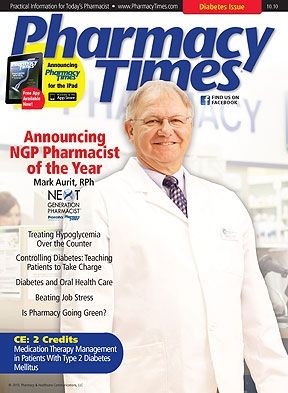Publication
Article
Pharmacy Times
Errors When Preparing Medications
Author(s):
Pharmacies must implement and maintain protocols to minimize the risk of errors when compounding and mixing medications.
Pharmacies must implement and maintain protocols to minimize the risk of errors when compounding and mixing medications.
Compounding.
A pediatric infectious disease physician prescribed Videx (didanosine) 10 mg/mL suspension for a 6-year-old HIV patient. Instructions from the physician directed that the prescription be compounded using “200 mL of distilled water, 200 mL of Maalox cherry antacid, and adding Videx 4ng solution to equal 400 mL.” The pharmacist who initially filled the prescription contacted a pharmacist at the prescribing facility for directions on properly compounding the medication. These instructions were handwritten and attached to the original prescription and were also entered into the pharmacy computer system.
The patient continued to take the Videx suspension as prescribed for the next 4 years. The prescriptions were filled at the same community pharmacy and all, except for the one initially dispensed, were compounded by 1 of 2 pharmacists. One of the pharmacists compounded the prescription correctly, while his partner mixed 4 packages of Videx 4-g solution in each prescription he compounded, doubling the Videx concentration to 20 mg/mL rather than 10 mg/mL.
The error was discovered when the pharmacist found a note from his partner stating that the patient was owed 200 mL of Videx at no charge. The pharmacist was puzzled by this entry. He discovered that his partner had been improperly compounding the medication over the 4-year period that it was dispensed. The partner erroneously believed that each bottle of Videx made 200 mL and that, therefore, it took 2 bottles of Videx to make the 400 mL as directed in the prescription.
The partner attributed the error to ambiguous instructions written by the pharmacist who filled the original prescription. These instructions reportedly gave no milligram strength, just the final volume of the suspension. However, the partner acknowledged that he never reviewed the Videx package insert for instructions, nor did he seek clarification from his partner and/or the prescriber.
To ensure patient safety, physicians and pharmacists must proactively assess the accuracy and safety of compounded medications. Before dispensing, clear, accurate, step-by-step recipes should be on file. Institute a process to ensure that all compounding recipes undergo a documented approval process prior to use, as well as an updated review every year. Establish an independent double-check process for all calculations completed each time a compound is made. A compounding logbook should be maintained documenting each compound made, the recipe followed, and all ingredients, including quantities, used. This logbook should be reviewed weekly and with each refill dispensed as a quality control check.
Mixing. An 8-month-old girl was prescribed amoxicillin/clavulanate potassium suspension to treat an ear infection. The prescription was taken to the family’s local community pharmacy, where a stock medication bottle labeled with instructions to give the child a half teaspoonful twice daily by mouth was dispensed. When the family arrived home, they measured a half teaspoonful of the powder and administered it to the girl. The pharmacy had failed to mix the powder prior to dispensing the medication. The girl was rushed to the emergency department, where she was treated for the antibiotic overdose.
To reduce the risk of this type of error, consider placing new prescriptions for oral liquid medications, especially those that need to be reconstituted, in a separate area away from other prescriptions waiting to be picked up. Mark the area as “not to be dispensed without speaking to the pharmacist.” Include specific product descriptions on the prescription label (eg, orange-flavored, white, opaque liquid). Review the label, route of administration, and directions for use with the patient; open the bottle with the patient and/or caregiver. Ensure that oral syringes (without caps) or other appropriate measuring devices are provided or are available for purchase. Provide education to patients regarding proper use and cleaning of the measuring device. Have the patient demonstrate how to measure and administer the dose to validate learning.
Dr. Gaunt is a medication safety analyst and the editor of ISMP Medication Safety Alert! Community/ Ambulatory Care Edition.
Subscribe to Newsletter
Pharmacy Times and the Institute for Safe Medication Practices (ISMP) would like to make community pharmacy practitioners aware of a publication that is available. The ISMP Medication Safety Alert! Community/ Ambulatory Care Edition is a monthly compilation of medication-related incidents, error-prevention recommendations, news, and editorial content designed to inform and alert community pharmacy practitioners to potentially hazardous situations that may affect patient safety. Individual subscription price is $52 per year for 12 monthly issues. Discounts are available for organizations with multiple pharmacy sites. This newsletter is delivered electronically. For more information, send an e'mail message to [email protected], or contact ISMP at 215-947-7797.

Newsletter
Stay informed on drug updates, treatment guidelines, and pharmacy practice trends—subscribe to Pharmacy Times for weekly clinical insights.






